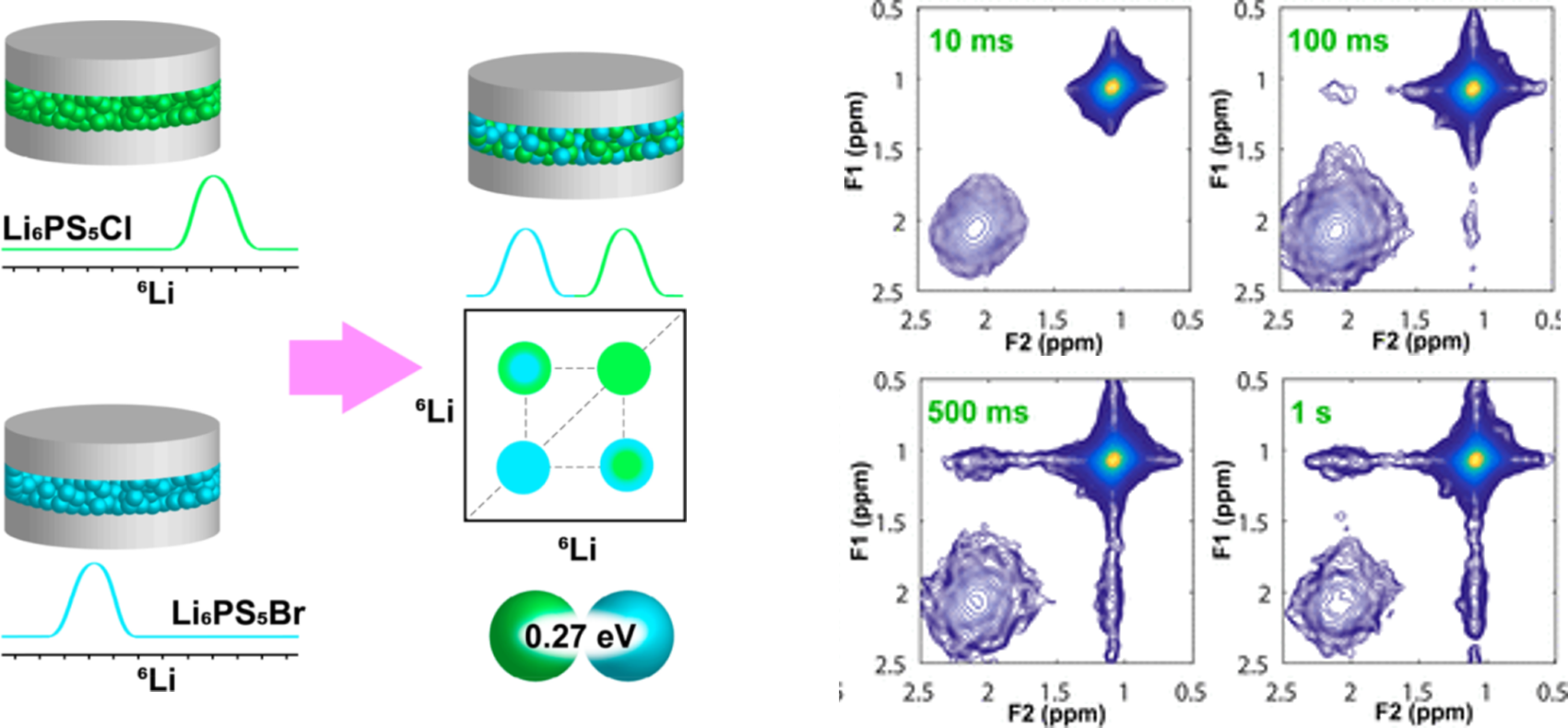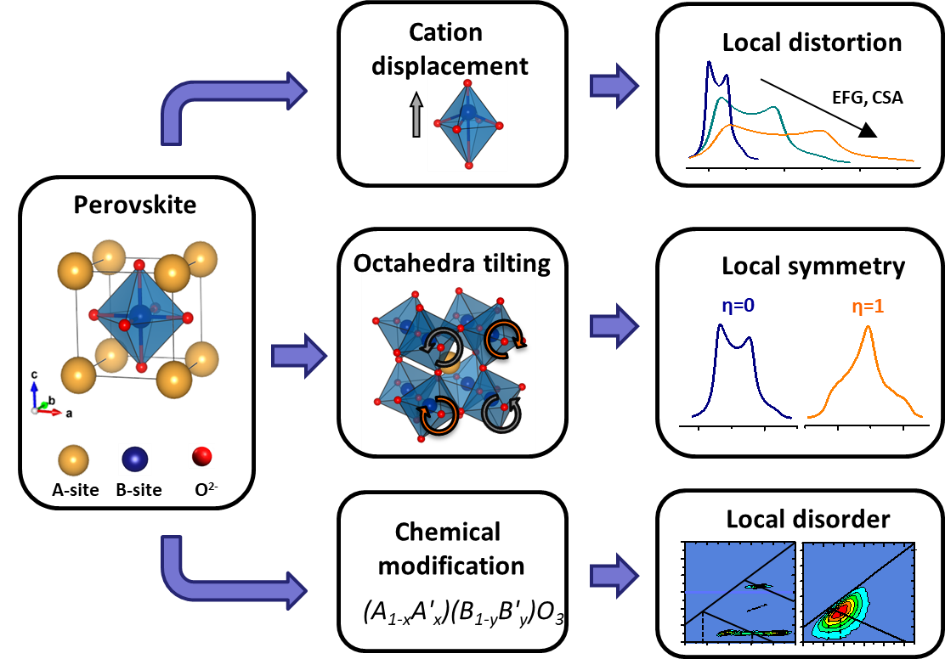Nuclear Magnetic Resonance Spectroscopy (ssNMR)
The properties of electrically functional materials found in electrochemical devices such as batteries, fuel cells, (super)capacitor, sensors and actuators are a direct consequence of the particular arrangement of ions in a material. However, the average structure determined from diffraction experiments oftentimes does not provide a complete perspective of the actual arrangement of atoms in materials, in particular for disordered or amorphous materials that are usually required to enable the operation of solid-state electrochemical devices.
Solid-state nuclear magnetic resonance (NMR) spectroscopy is a technique capable of gauging the local structure of materials. In this way, it offers an ideal complement to characterization methods sensitive to light elements, such as neutron diffraction.
This technique relies on a nuclear property, the spin, to probe the local surroundings of the probed nuclei in a structure or material of interest. Short-range interactions between the nuclear magnetic moment with surrounding electrons and neighbouring ions enable the NMR spectrum to be a unique fingerprint of a particular local structure or chemical environment.
In addition to that, this technique can also probe the local structure dynamics at a range of frequencies from Hz and kHz to MHz, gauging ion mobility and chemical exchange as a function of temperature and composition. Furthermore, in situ and operando studies help reveal how the local environment of probed nuclei (e.g. 7Li) respond to electrical potential and chemical environments as those found in working electrochemical devices.
Our group uses a wide range of NMR-based experiments to probe the local structure and dynamics of electrically functional materials, ranging from the exchange of Li+ ions between different phases of interest in all-solid state batteries, to the role of chemical substitution for electroceramics with application as lead-free dielectric materials.

